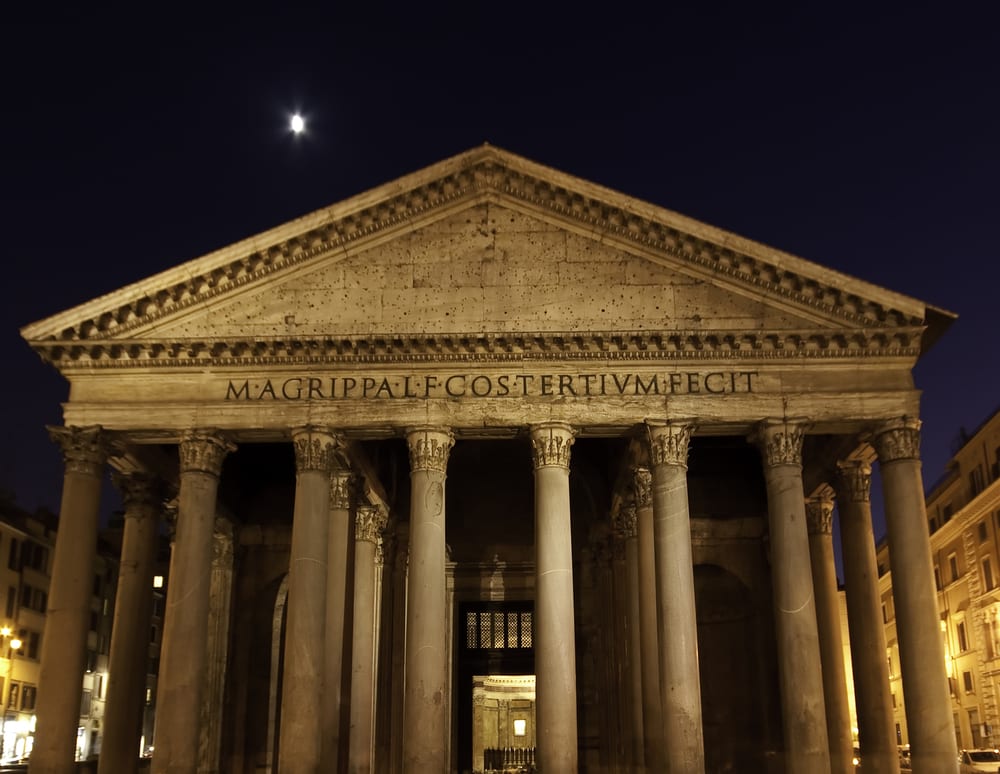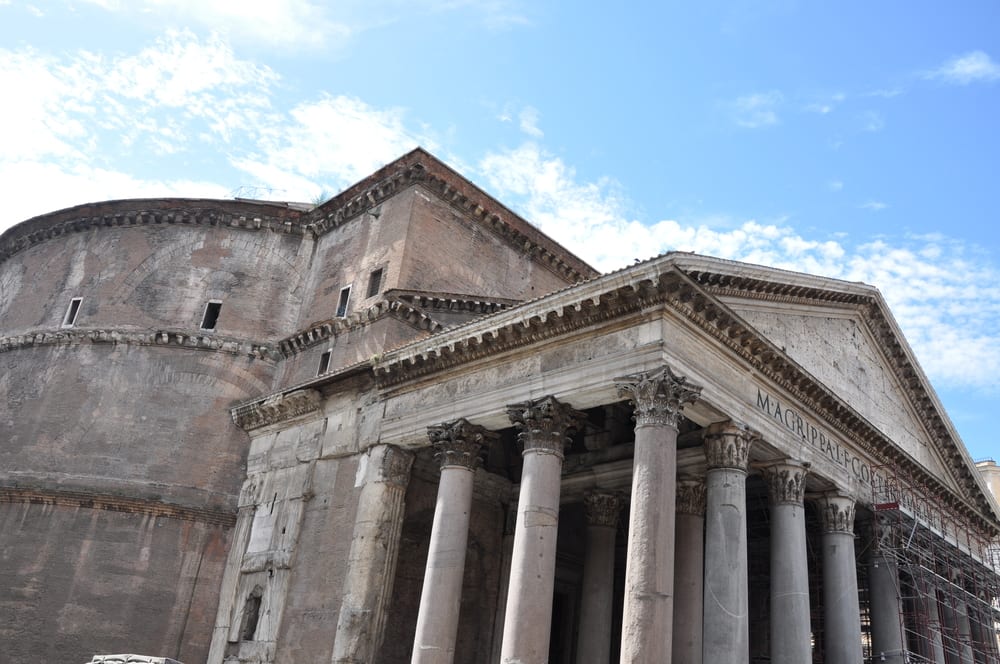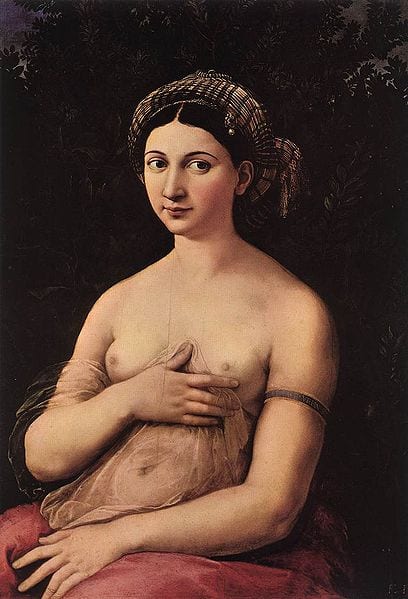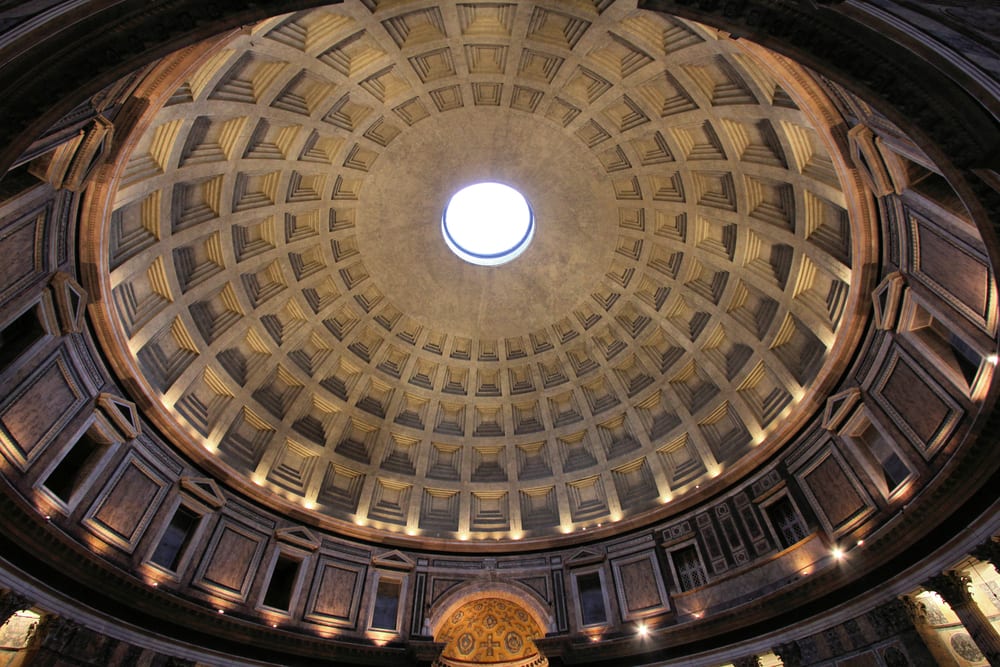
Pantheon Facts: 6 Surprising Insights into the Roman Monument
April 3, 2024
The Pantheon is one of the most famous sights in Italy. But there’s a lot more to this ancient Roman building than its postcard-worthy perfection! If you want to see it in person one of our expert guides will be happy to take you, but in the meantime, here are six Pantheon facts you might not have known about the incredible landmark (and six reasons why it’s one of our favorite places to visit).
The Pantheon is actually a Christian church—and has been for centuries
A nativity scene in the Pantheon—er, in the Basilica of St. Mary and the Martyrs! Walk into the Pantheon today, and all of the information signs say “Basilica di Santa Maria ad Martyres,” or “Basilica of St. Mary and the Martyrs.”
Huh? Isn’t this a pagan temple? Well, it was once -more on that in a moment. But in 609 A.D., it was turned into a church. It’s still a church today, and, yes, you can attend Sunday Mass here!
Insider’s tip: Check out our picks for 10 more can’t-miss churches in Rome.
The Pantheon is the best-preserved ancient Roman building in Rome
Largely because the Pantheon was turned into a church, it was kept remarkably well-preserved. In fact, you can still experience the building much as the ancient Romans would have. Sure, some things have changed (there’s a Christian altar here now, for example, and frescoes of saints), but the dimensions of the building, along with much of its decoration, has remained the same.
The Pantheon dome remains the single largest, unreinforced concrete dome in the entire world
At about 142 feet in diameter, the Pantheon’s dome is bigger even than the dome of St. Peter’s Basilica. It’s also completely unreinforced… there’s no rebar in there. That makes it the single largest unreinforced, concrete dome in the entire world. And, yes, it was built by the Romans in 125 A.D., not by later architects.
This isn’t the original Pantheon

The ancient Pantheon from the outside. If you have to wait in line to enter, you’ll still enjoy the view.
You read that correctly. This Pantheon… is not the original! Don’t worry—it’s still ancient. But it just so happens to be the third version of the building. The first one was built in about 27 B.C., but burned down; the second, built in the 1st century A.D., also burned down. This, the third, was built in 125 A.D. Luckily, it survived later fires.
This, by the way, explains the strange inscription above the porch, “M·AGRIPPA·L·F·COS·TERTIVM·FECIT,” which means, “Marcus Agrippa, son of Lucius, consul for the third time, built this.” Agrippa was around in the 1st century B.C…. so how is that possible? It’s possible because Agrippa didn’t build the third version—he built the first. The inscription was added as a nice little nod to him, as the original founder.
We’re still not sure who was worshiped here
For a building as thoroughly studied as the Pantheon, a lot of mystery remains. One major question? What the Pantheon was used for. We know it was a pagan temple. But to worship which gods is anyone’s guess.
Even Cassius Dio, writing just 75 years after the Pantheon was reconstructed, wasn’t sure what it was for. “It has this name, perhaps because it received among the images which decorated it the statues of many gods, including Mars and Venus; but my own opinion of the name is that, because of its vaulted roof, it resembles the heavens,” he wrote in his History of Rome. This Pantheon fact is still a bit of a mystery.
The tombs tell the story of a doomed engagement

A likely image of Raphael’s lover, “La Fornarina,” who may have been the reason why he never married his fiancée…
Most people know that Raphael, the famous Renaissance painter, is buried inside. What a lot of people don’t know is that Maria Bibbiena, his fiancée, is as well—right next to him. While that might seem sweet, it’s also tragic. Raphael became engaged to Maria, the niece of a powerful cardinal, in 1514. He put off the marriage for six years—and, in the meantime, was involved in a passionate love affair with the daughter of a local baker—until it was too late for Maria, who died. Raphael died not long after, at the age of just 37 years old.
Ready to explore the path once trodden by emperors, popes, and other fascinating figures? Join us for a guided tour of two of the most majestic attractions in Rome on our Castel Sant’Angelo to Pantheon Tour!
Explore ancient Rome a little differently with our guided walking tour of Roman Icons, offering special access to iconic landmarks such as Castel Sant’Angelo and the Pantheon. Listen to captivating tales and fun historical facts from our expert guides and as you explore these magnificent structures. Enjoying breathtaking views over the Eternal City during a morning you’ll never forget.
by Walks of Italy
View more by Walks ›Book a Tour

Pristine Sistine - The Chapel at its Best
€89
1794 reviews

Premium Colosseum Tour with Roman Forum Palatine Hill
€56
850 reviews

Pasta-Making Class: Cook, Dine Drink Wine with a Local Chef
€64
121 reviews

Crypts, Bones Catacombs: Underground Tour of Rome
€69
401 reviews

VIP Doge's Palace Secret Passages Tour
€79
18 reviews

Legendary Venice: St. Mark's Basilica, Terrace Doge's Palace
€69
286 reviews










